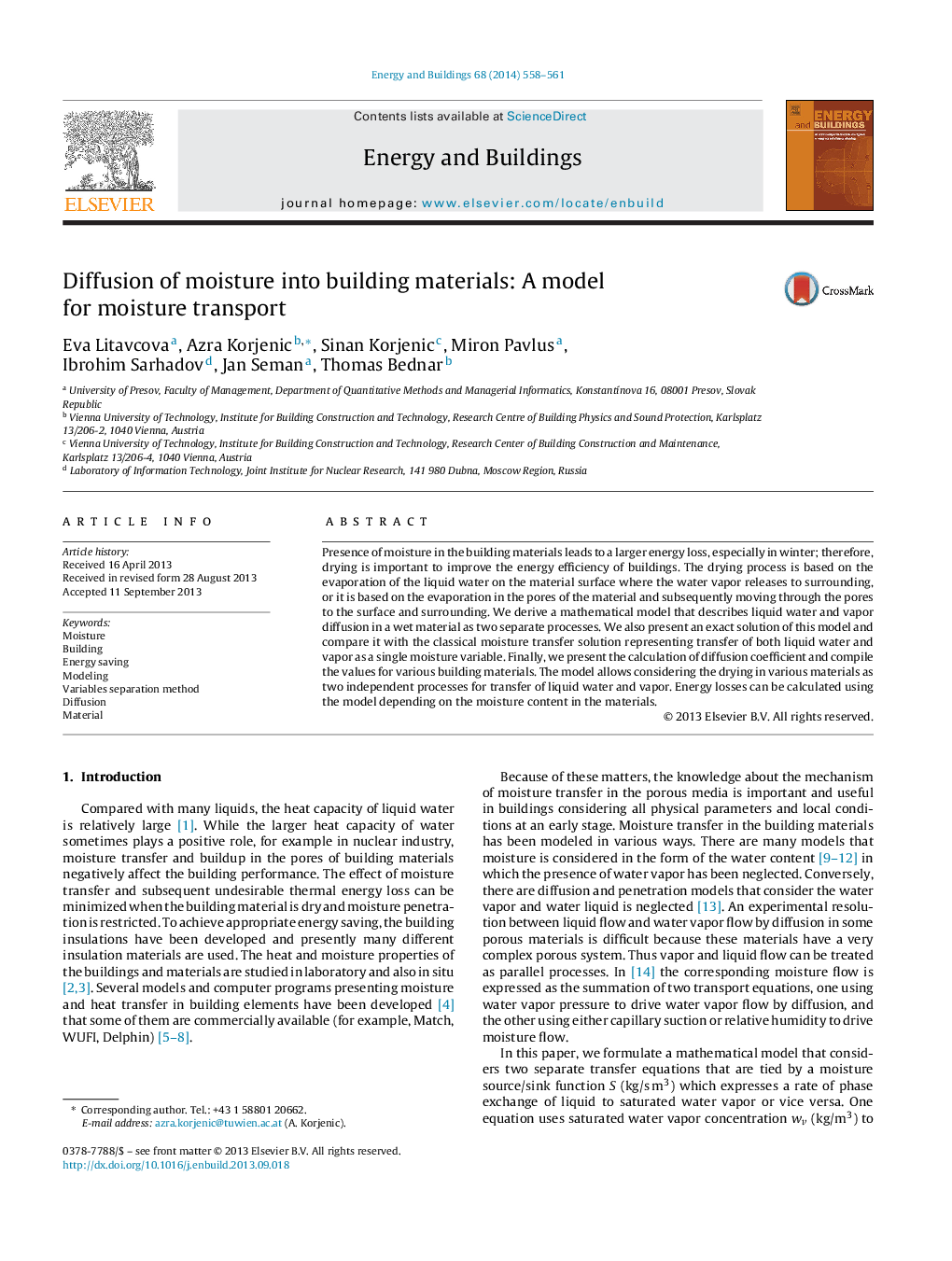| Article ID | Journal | Published Year | Pages | File Type |
|---|---|---|---|---|
| 10286043 | Energy and Buildings | 2014 | 4 Pages |
Abstract
Presence of moisture in the building materials leads to a larger energy loss, especially in winter; therefore, drying is important to improve the energy efficiency of buildings. The drying process is based on the evaporation of the liquid water on the material surface where the water vapor releases to surrounding, or it is based on the evaporation in the pores of the material and subsequently moving through the pores to the surface and surrounding. We derive a mathematical model that describes liquid water and vapor diffusion in a wet material as two separate processes. We also present an exact solution of this model and compare it with the classical moisture transfer solution representing transfer of both liquid water and vapor as a single moisture variable. Finally, we present the calculation of diffusion coefficient and compile the values for various building materials. The model allows considering the drying in various materials as two independent processes for transfer of liquid water and vapor. Energy losses can be calculated using the model depending on the moisture content in the materials.
Related Topics
Physical Sciences and Engineering
Energy
Renewable Energy, Sustainability and the Environment
Authors
Eva Litavcova, Azra Korjenic, Sinan Korjenic, Miron Pavlus, Ibrohim Sarhadov, Jan Seman, Thomas Bednar,
